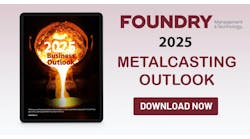Most companies struggle with employee disengagement. It’s costly to productivity and profitability, and to individual’s well-being. In 2017 Gallup’s engagement-survey data found that two-thirds of U.S. workers are not “engaged” with their work. American companies have invested billions of dollars annually for many years to solve this problem. The results? The needle still hasn’t moved. How much does your experience match or confirm this observation? Could the data simply reveal a general misunderstanding of the true causes of disengagement?
For example, the “Acme Corporation” was suffering a 41% turnover rate. A recent survey showed that 85% of their workforce was disengaged. A general attitude of apathy, complaining, and cynicism pervaded the corporate culture.
This was puzzling to Acme managers because they had made multiple efforts to improve engagement. These were well-planned and -executed programs, such as team-building exercises, social events, and pay raises. Each one generated some early enthusiasm and positive survey results that encouraged optimism. Unfortunately, in each instance the magic wore off within a few weeks. In despair, Acme engaged a firm with a very different philosophy than their other advisors had championed. This firm focused on helping the executive leadership understand the root-causes and solutions of disengagement. Within nine months, the disengagement rating at Acme improved from 71% to 26% and turnover dropped to 19%.
For Acme, resolving the dilemma started when Acme managers acknowledged that because their previous solution attempts had been ineffective, their approach to seeing the problem must be flawed. This insight, humility, and openness to new ideas paved the way to discovering the actual causes of disengagement in their corporate culture. Once root-causes are understood clearly, solutions usually become obvious.
What fixes engagement issues?
The first step is for the company leaders to take an honest, objective view of the company culture (beliefs and behaviors that determine how people interact and do their work) that impacts and drives the way people think and behave. This is why lasting change occurs when the effort at reform is focused on the organization at large, aiming to change the corporate culture rather than specific individuals.
Here are the relevant human psychological needs that are the actual root-causes of people’s engagement level. Each one is followed by examples of mindsets/philosophies that effectively address these needs. Engagement will improve when management’s actions align with people’s psychological needs.
1. To feel valued and understood. Managers earnestly listen to employees’ concerns, opinions, and ideas with the intent to understand and consider their merits before responding. This replaces the common responses of defending positions or punishing employees for expressing contrary viewpoints. Managers are not required to agree with the employees. What’s important is that the managers demonstrate a sincere effort to listen, understand and consider their employees’ inputs.
2. To express our gifts and talents. Managers focus on aligning roles and responsibilities with the gifts and talents of the individual employees. We all bring substantially higher levels of energy and engagement (and productivity) to our work when like what we do and are good at doing it. As the legendary management consultant Peter Drucker said: “A manager’s task is to make the strengths of people effective and their weaknesses irrelevant.”
3. Meaning/purpose in what we do. This means that employees have a clear understanding of how their work contributes to the mission and influences the vision of the organization. Don’t expect employees to figure this out on their own; People are much more motivated when they realize that their efforts truly matter.
4. Internal drive for progress or development. Employees are at their best when there is “healthy tension” (not too low, not too high) to meet clear and reasonable standards. This means fair and consistent accountability and consequences based on performance relative to agreed-upon standards. Being too nice and lax harms engagement because people inherently desire growth and realize that standards and consequence help them do this. People are motivated when they focus on, “What did I achieve today?” What did I learn today?” How did I grow?”
What doesn’t work
In short, what will not work is anything that doesn’t authentically address the root-causes of disengagement is doomed to fail. If the message is “look at this nice thing we just did for you” rather than “this is how we value you as human being,” it’s highly likely to fail.
Examples of the “nice thing we just did for you” include most team-building events, social mixers, company newsletters, upgraded office environments, etc. Even pay and benefit increases have an initial rush soon followed by the familiar “right back where we were” rebound effect.
This is not to suggest employers should not do these things: They’re nice add-ons after the day-to-day essentials of human psychology are authentically addressed.
It’s understandable that we gravitate toward easy, quick-fix solutions to our problems. There are plenty of people to make these suggestions and sell them to us. They also don’t require us to identify our own personal contributions to the problems which we’d prefer to avoid.
However, as in most things in life, there is no substitute for working at the cause-level and creating new habits of thinking and behavior. If you’re serious about creating high-level engagement that will lead to more profits with greater ease and personal satisfaction, this is what it takes. As a bonus, openly addressing personal challenges that make you human will increase your effectiveness and fulfillment in every area of your life.
Brad Wolff specializes in workforce and personal optimization. He’s a speaker and author of "People Problems? How to Create People Solutions for a Competitive Advantage." He is the managing partner for Atlanta-based PeopleMax, and specializes in helping companies maximize the potential and results of their people to make more money with less stress. Learn more at www.PeopleMaximizers.com.









